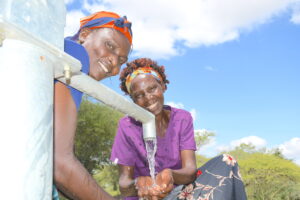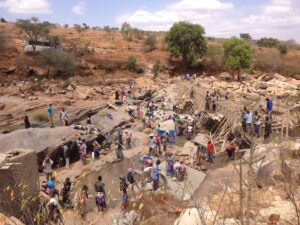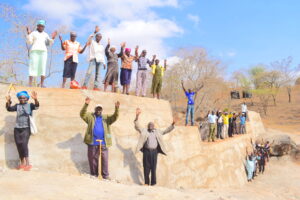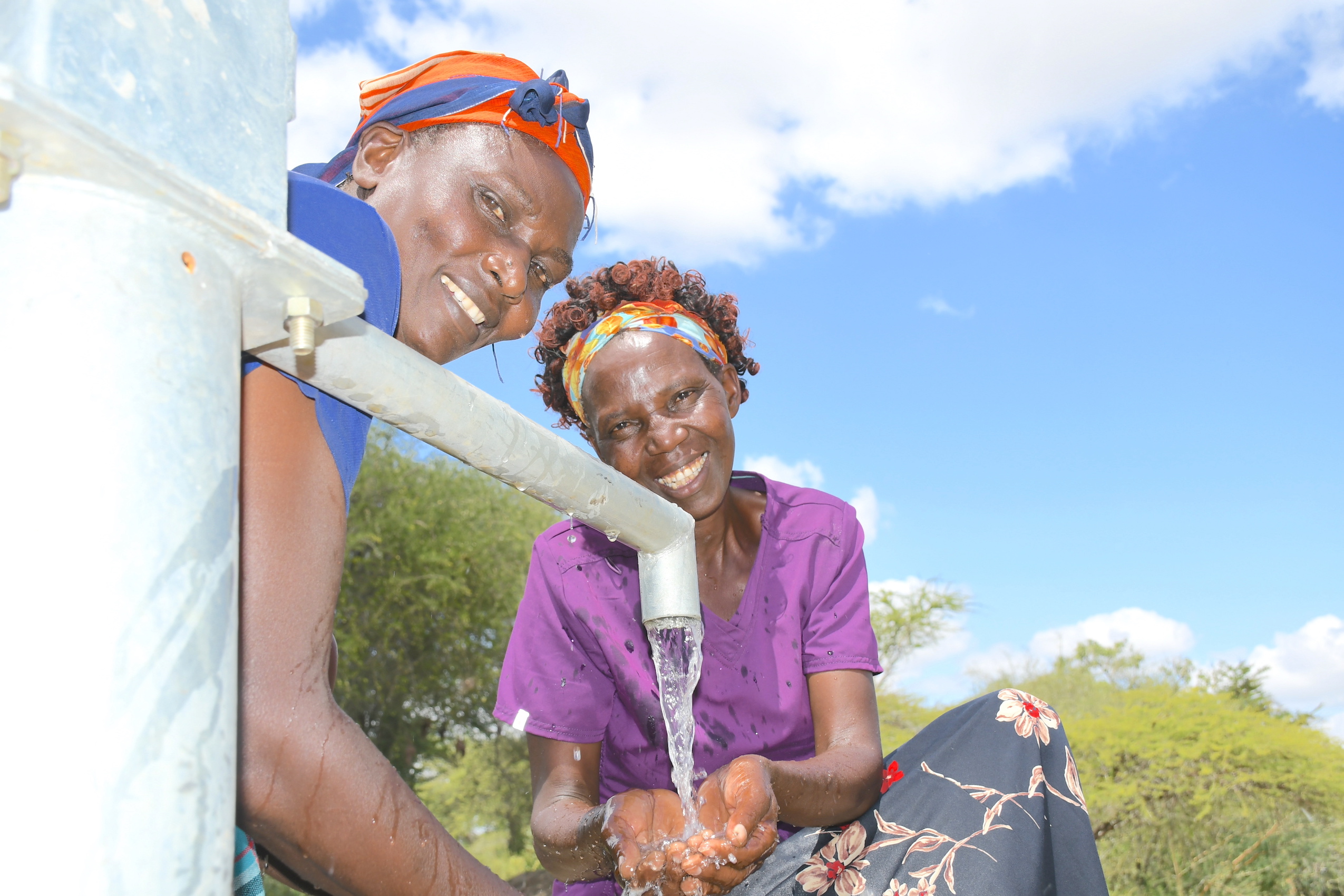by Dwain Lucktung, Communications Manager, Sand Dams Worldwide

Members of the Uvilani Central Self-Help Group collecting water from their sand dam.
Dedicated Rotarians all around the world and Sand Dams Worldwide are very proud to work together to promote peace, prevent disease, provide access to clean water and sanitation, enhance maternal and child health, improve basic education and literacy, and develop communities. These benefits accompany the environmental benefits of re-greening arid land and restoring the water table.
Sand Dams Worldwide (SDW) is an award-winning UK charity (accredited to the UN Convention to Combat Desertification) supporting some of the world’s poorest people to transform their own lives and land through water and soil conservation in drylands. Sand Dams provided a speaker for Rotary’s Pavilion at COP 28.
The charity works with local in-country partners to help vulnerable rural dryland communities to build sand

The Ikanga Self-Help Group building their sand dam in Kenya.
dams, a sustainable and cost-effective rainwater harvesting technology that can last upwards of 60 years and capture up to 40 million litres of water, replenishing every rainy season. That water is stored safe from disease and evaporation within the sand. It’s easily extractable via pipework connected to hand-pumps and taps, with one sand dam providing enough year-round water for over 1,000 people. For more information about how sand dams work, watch this short animation.
Sand dams play a significant role in mitigating the effects of climate change, including reversing land degradation. They raise groundwater levels through slowing down the rate of run-off and capturing rainwater that would otherwise be lost as run-off, while allowing most water to continue downstream. The slowing down of water run-off allows water to infiltrate the soil, resulting in vegetation recovery, reduced erosion, restoration of degraded land, and re-greening.

The Uvilani Central Self-Help Group celebrates the completion of their sand dam in Kenya.
While Sand Dams Worldwide’s work often starts with a sand dam, it’s certainly not where it ends. Once water and time are available, a wealth of opportunities arise. The charity also works through partners to advise communities on improved climate-smart agriculture techniques, such as terracing, developing seed banks, and the planting of drought-resistant crops and trees, empowering families to grow enough food to eat, store, and sell.
With programmes currently in Zimbabwe, Mozambique, Malawi, Tanzania, Ethiopia, and two in Kenya (one in the southeast working with self-help community groups, and another in Tsavo National Park focusing on supporting local wildlife), Sand Dams Worldwide have enabled the construction of over 1,000 sand dams across 10 countries, providing over 1 million people with lifelong access to clean water. They have also supported communities to dig over 1.8 million metres of terracing and plant over 1 million trees.
Over 200 Rotary clubs spanning 20 districts in Great Britain and Ireland (GB&I) have contributed to Sand Dam projects through eight Rotary Global Grants to date. Rotarians play essential roles in addition to fundraising. “The international teams in Rotary GB&I liaise with Sand Dams Worldwide(SDW) and, more recently. Build Aid, who have been our supplier for the last two Global Grants,” James Onions explains. “This is part of our direction to develop more capable delivery resource. We continue to do our club funded projects with SDW and liaise in Kenya with African Sand Dams Foundation (ASDF).
If you are a Rotarian or Rotary club and would like to support Sand Dams Worldwide, or if you’d like to receive a free, downloadable Rotary and Sand Dams Worldwide brochure, please email [email protected]
Sand Dams Worldwide are the winners of the International Aid and Development Award at the 2021 Charity Awards, winners of a National Award and nominee of a World Water Award at the 2020 Energy Globe Awards, a 2020 International Forum Design GmbH (iF) Social Impact Prize winner, and winner of the ‘Charity of the Year – with an income of £1m-£10m’ award at the 2019 Charity Times Awards. All photos in this article are used with permission from Sand Dams Worldwide.

